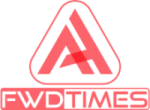Developing easy-to-navigate, compelling, and responsive websites is a sure-fire way to success in these modern and highly tech-savvy times. Companies or individuals who want to sell anything, be it a product or a service, need to focus on having a great website. This is precisely where Content Management Systems, or CMSs, step in.
Since the World Wide Web was invented, website development has gone through immense growth, and there is still no slowing down. Innovation in web development is rapid and like a race. You need to be on your toes at all times if you want to win.
Who understands the importance of content better than Google? It is determined to push towards the new age of web convenience, and as a result, Google solidified its Core Web Vitals. To put it into simple words, it is a series of user-interference and experience criteria used to judge websites and determine their ranking in search results.
Understanding Core Web Vitals
Before taking a plunge into which web publishing platform or content management system is the best, it is vital to understand Core Web Vitals.
They are basically three primary criteria, serving as metrics for website performance regarding user experience. These criteria are:
- Largest Content Paint (LCP)
- First Input Delay (FID)
- Cumulative Layout Shift (CLS)
LCP: It is the speed at which a significant chunk, or most of the page’s content, is loaded. It should be less than 2.5 seconds max.
FID: It is the responsiveness of a website when the user interacts with it. It should be less than 100 milliseconds max. Meaning, a first-user experience website should provide feedback within 100 milliseconds.
CLS: It is a measurement of the visual stability of common website errors. These inconveniences of website errors include things like visual consistency and content shifting here and there while loading. Apart from the inconvenience, it causes users to click on things they are not meant to. It can cause severe damage.
The three well-known competitors are WordPress, Drupal, and Wix. So let’s have a look at how competitive they are against each other.
WordPress vs. Wix
Wix is a closed system, and it allows developers to build a web presence and make the website go live quickly. It means that business owners can start earning from their online business fast. Wix handles all improvements in technological advancements, allowing customers to focus solely on their business.
Wix is taking the Core Web Vitals seriously, and it has been allocating resources to improve Core Web Vital scores and up its search engine optimization game. The efforts are paying off for Wix.
The comparison report shows that WordPress and Wix started out with equal scores for their performance in 2021, but Wix began to pull ahead, and by May 2021, it started to outperform WordPress with a significant margin.
WordPress vs. Drupal
WordPress is open source, and is managed by a community. According to some, this might be a clear disadvantage for the CMS platform. However, this might not be true.
Drupal, which is another popular CMS, seems to perform well. It has high scores, with over 50% of its websites scoring highly for core web vitals.
If Drupal successfully raises Core Web Vital scores, why is it proving to be so hard for WordPress? It is time for WordPress to get its act together!
What Does a Core Web Vital Report Say?
This report is compiled from the CRuX and HTTPArchive Lab Web Technology Detections. The report shows how WordPress, Drupal, Wix, and other CMS platforms handle CWV criteria. It analyzes eligible websites and sorts them with passing scores.
The data was compiled for an entire year, and now the final standings are:
- Wix 55.3%
- Drupal 50.2%
- WordPress 31%
Interestingly, WordPress started ahead of the competition, but it quickly lagged behind. Its open-source rival, Drupal, and other commercial alternatives began concerted efforts and invested in CWV and responsiveness.
However, even after these ratings, determine if WordPress is not a worthy CMS anymore or if others are a better choice. The people who use each of these web publishing platforms are very different, and each has a unique value proposition.
While there is an overlap, and it cannot be ignored, one platform may be more inclined towards providing website building opportunities for professionals, while WordPress offers more comprehensive customization options. In a nutshell, these changes are really dramatic; for instance, commercial platforms like Wix were known to lag behind WordPress when it comes to SEO and page speed, but they have caught on steadily in the last year.
Why Is WordPress Falling Behind and Will It Continue to Stay Behind?
Despite being the most prominent used CMS platform, there is no question that WordPress is falling behind. Even the WordPress developers, the people who have created this platform, are aware of its lack.
It is a good sign that WordPress is aware of its lacking because unless you know the problem, you wouldn’t be able to fix it.
The CMS platform under discussion has no performance team, which might be why it’s falling behind. There is no coordinated effort to improve, although the volunteers are trying to bring the platform back to its lost glory once again.
Two years ago, WordPress introduced Core Web Vitals, and the company is still contemplating what needs to be done. Two years later, the platform is getting around and discussing the creation of a group that could tackle the performance problem. Reaching an agreement or doing something about it is still a farfetched dream.
It is difficult to argue whether these findings are going to stay relevant or not in a year or two because the dynamics of technology keep altering. Judging a platform on the basis of performance only seems a bit unfair because the entire Google ranking doesn’t hinge on how fast the website loads and how responsive it is. But that doesn’t mean the report is irrelevant.
Wrap Up
Someone looking forward to building a website from scratch might find this information useful, but there is a great debate about losing the forest for trees.
Every project is unique, and so is its performance, quantity of traffic, and quality of content. Obsessing over the Core Web Vital Score doesn’t guarantee any of the mentioned factors. The actionable data for your website depends on several other things, like the content you have, the relevancy of your project, how strongly you work on SEO, etc.
You cannot expect a good pie for dinner only because you have an oven. The right ingredients and a great recipe are still in demand. Do not let this report’s results distract you from investing in and creating value for potential leads and existing customers.
Core Web Vitals are not entirely irrelevant because, in the end, your chosen CMS platform matters as your website is practically on it. However, it is also not everything. Even if your chosen platform is not ranked at the top but your website is doing great, is there a need to go through the hassle of developing it on a new CMS platform off the ground? Brainstorm your possibilities and opportunities before taking any step.

